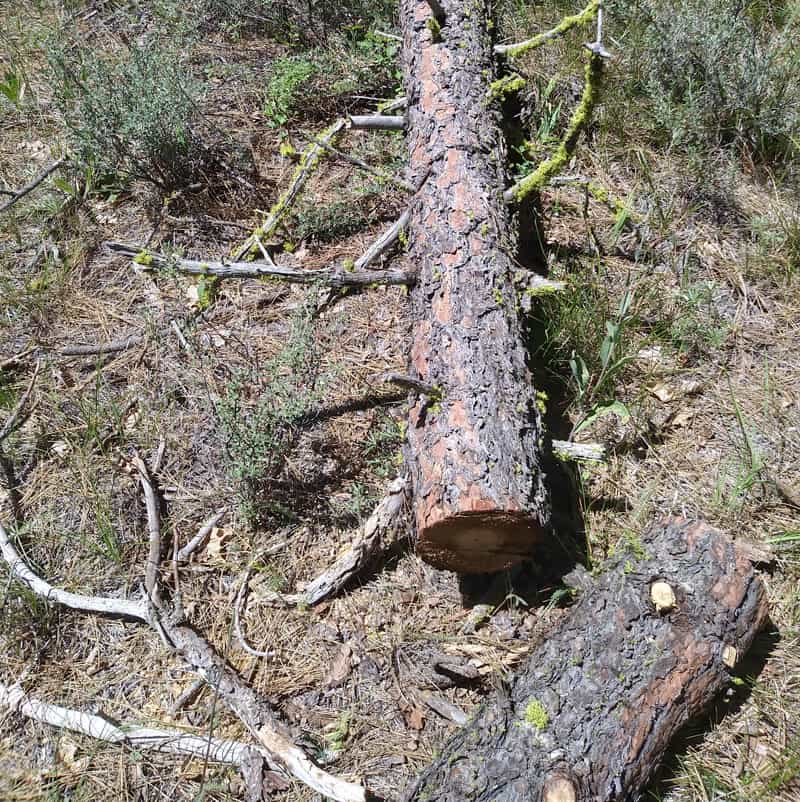
Surprisingly it was amazing at just how many ways I found there are to make money with any land without cutting trees. This entire article will give several examples of ways to make money from any property.
So, can you make money off forested land without cutting trees? You can raise several types of animals, grow many different things, make lumber without cutting trees, create tangible byproducts, rent services, or mix and match creative services. These are only just a few of many ideas.
Even if all you have is half an acre, there are a lot of ways to make extra money and even potentially a full-time living. In this article I go into more detail for each of these items mentioned.
It’s always advised that whatever venture you decide on, look into the local restrictions and requirements. Also, depending on what you’re planning you may want to talk with an insurance agent. They can talk about and price out liability insurance to cover you for any product or service you’re offering.
Raising Animals
Without cutting trees you can raise various animals for multiple purposes.
- Chickens for eggs and meat
- Chicks to sell.
- Rabbits to sell as pets or meat
- Sheep for wool and meat
- Sheep to market
- Goats for milk, meat, or to sell as pets
- Cows for milk, meat, or the market
- Goats to rent out to people to help keep their weeds and grass control.
- Pigs to sell or butcher for their meat
- A petting zoo if you have a decent variety of animals.
- Harvest the manure that your animals produce and sell it for fertilizer.

Grow Things
Depending on the size of property you can,
- Grow crops
- Fruit trees
- A garden
Sell items grown at local farmer’s markets or if available, from a stand along a busy road. If there’s room on your property, you could even plant a vineyard and eventually bottle your own wine.
Make Lumber With No Tree Cutting
Invest in a mill and mill various types of lumber from the snags (standing dead trees), on your property to use or resell. You can also buy trees from other forest landowners if you run low. If you don’t have enough logs to mill and sell the lumber you could expand your offerings by building things like
- furniture.
- chicken coops
- rabbit runs
- sheds/tiny houses
- or other animal homes.
If you happen to have young trees needing thinned use trees that are four to six inches to make posts to sell. Use wood posts for numerous things such as fencing, corrals, and small outbuilding structures. If your sawmill is portable, offer other wooded landowners to have you travel to them to mill their logs. Or have the landowners bring their timber to you to have them milled into useable lumber.
Tangible ByProducts
There are several items you could process a little bit and then sell them as a product. Besides the already mentioned manure, lumber, and poles, here are a few other things that came to my mind for creating a sellable product.
- Maple syrup – fresh from Maple trees
- Walnuts – raw from walnut trees if you have any on your property.
- Pinecones – many uses for these from pine nuts to wreaths and fire starter.
- Pine pitch – great for natural glue and candles.
- Pine needles make excellent mulch called pine straw and doesn’t break down nearly as quickly as bark chips.
- Acorns can be used to make Acorn flour or just for arts and crafts projects.
- Sawdust from the mill if you have one
- Firewood from any snags thinned out or downed trees. Trees that can’t be used for milling into lumber. Wood can come from the slabs of the milled tree. That’s the round sections of the tree that are milled off but can’t be used for actual lumber.
- Raise bees and make fresh honey that can be sold online and at local farmer’s markets.
Rental Services
Build a small cabin and rent it through someplace like Airbnb.
Invest or build a tiny house and rent it out through Airbnb as well.
Depending on your property, create a place where you can rent out space for RVs and tent campers. Secure an area of your land and rent to people with RV’s, trailers, and boats for the winter months or when they’re not in use.
Lease out a portion of your land to companies with cell towers, solar arrays, or wind turbines.
Create garden plots and rent them out to people who don’t have a place for a garden or create a gardening community.
If you have equipment such as a mower, backhoe, or even a dump truck you could easily offer various services to other landowners that would be willing to hire you.
Do you have a barn? If so, rent it out for special events, weddings, or photoshoots.
If you have a vineyard, again rent it out for special events as well as a place for photographers to bring their clients.
Set up classes for people to learn how to, plant a garden, operate a chainsaw, cut and harvest a tree, split wood, drive a tractor, build a log cabin or just a shed, operate a sawmill, can vegetables, make jam and jelly or any other task that people might be interested in learning.
A blog website where you write articles about your questions and experiences on your land that can help others to learn from your successes and failures. Create videos that show how you live your life on your property known as vlogging or create a how-to video series to help other people looking for assistance with a particular topic.
Multiple Creative Offerings
With some of these ideas, you may have to combine them, otherwise, a single activity may not pay enough. For example sell your vegetables, eggs, goat cheese, and honey all at the same farmers market while possibly displaying your chicken coops for future orders. Or combine several rental cabins with a remote or primitive tenting area for larger groups of people who can’t maybe afford the cabins. Offer an outdoor kitchen area as well that can be rented out at the same as the cabins and campsites. Some people can’t live without power so have some power options available for them to have for an extra cost such as solar or generator power.
Another reason for having multiple operations due to the fact some options will be seasonal. For instance, pinecone gathering can only happen during the fall months of the year, and pine straw for mulch is best harvested during late fall and early winter. So that leaves a lot of open months with no income coming in. So those two things could be more of an add on to something like harvesting firewood, cutting lumber, or building dog houses, bunny cages.
You’ll Want to Do Your Homework
These are just general ideas that will require some work on the reader’s part if you decide to implement one or more of them. You’ll have to determine a lot of details that might need some experimenting and hard work to get them perfected.
As An Example
Raising chickens sounds easy enough, right, just buy a few chickens, set up nesting areas, give them some food and water and then sit back and wait for eggs to start rolling in. However, there are some things you may not know that you should. For instance, are there predators in the area and if so how will you protect your flock from them?
If you choose a coop, do you know how large it needs to be to hold all your chickens comfortably? Do you know how many nesting areas (preferably a box) you’ll need with the number of chickens you plan to raise? Did you research on everything about the breed of chicken you’ve chosen to have a full understanding of your feathered friends like how many eggs to expect from them, how many years will they lay, are they susceptible to diseases and how to prevent them. Did you know that in most cases you do not need a rooster unless you plan on raising and selling chicks?
What’s The ROI?
Something you might want to calculate is your ROI (return on investment) by determining how many eggs your hens will lay in a week. Then divide the number of laid eggs by 12 to get how many dozens of eggs, times the going price for per dozen to get your gross dollar amount. Subtract the amount of feed and other items such as treatments and hardware from the total amount of money received as income to figure a net profit. Then you’ll have to ask yourself if the return, if positive, is worth the amount of work put into it.
Hopefully, this information will help you with determining whether you can earn some income from your current or soon to be property.
Thank you for reading this article. Now, have fun as you work towards that American dream.
